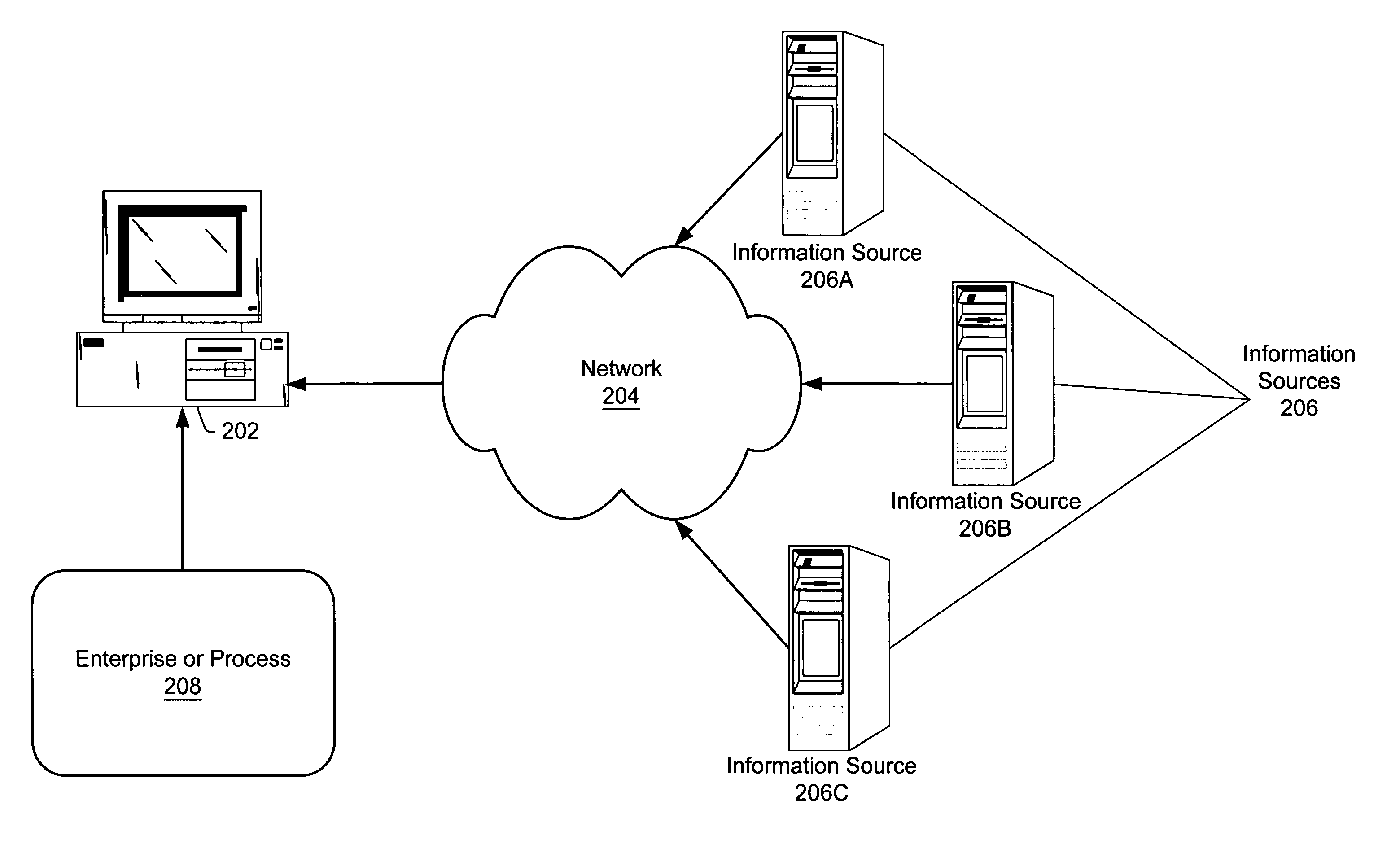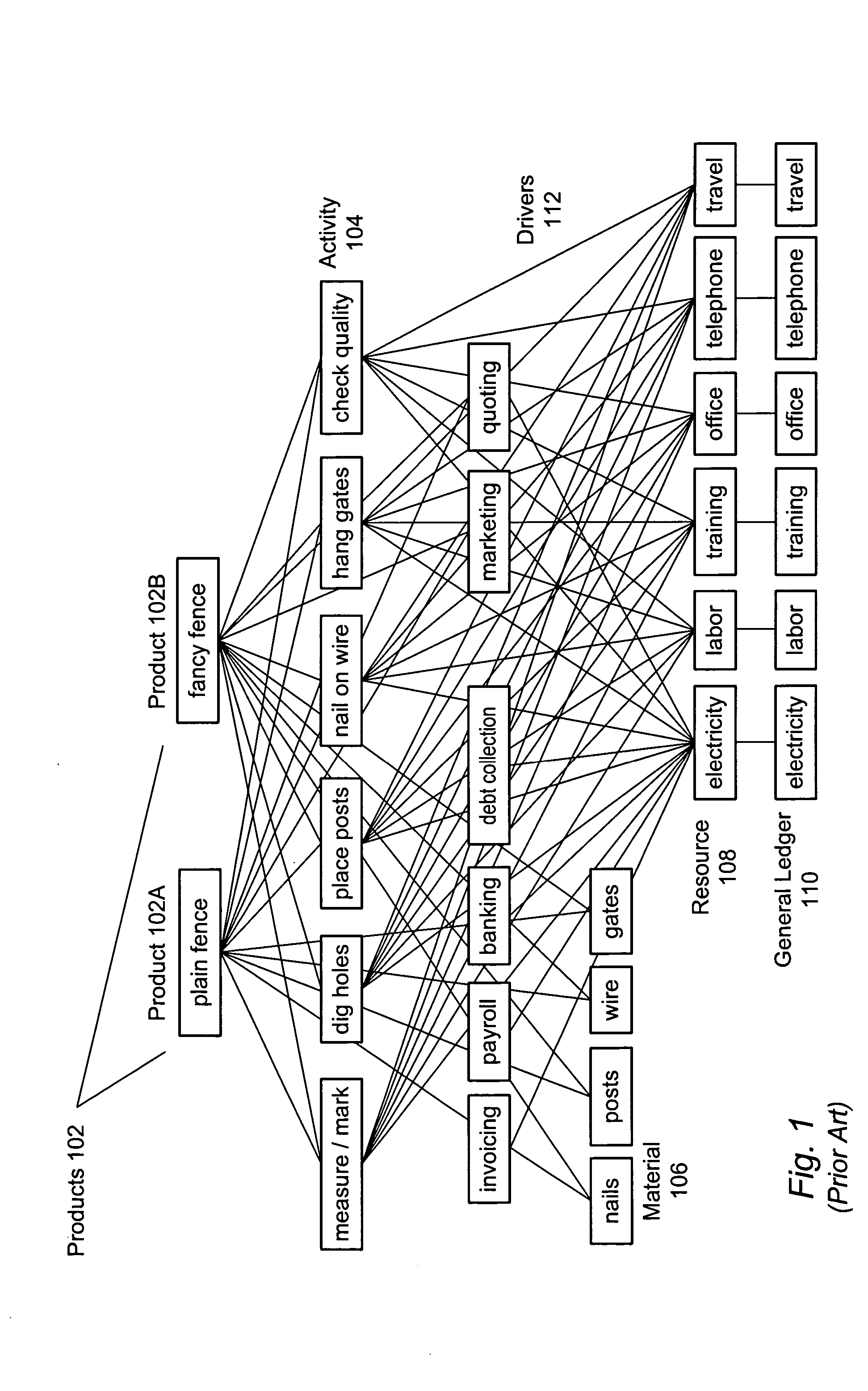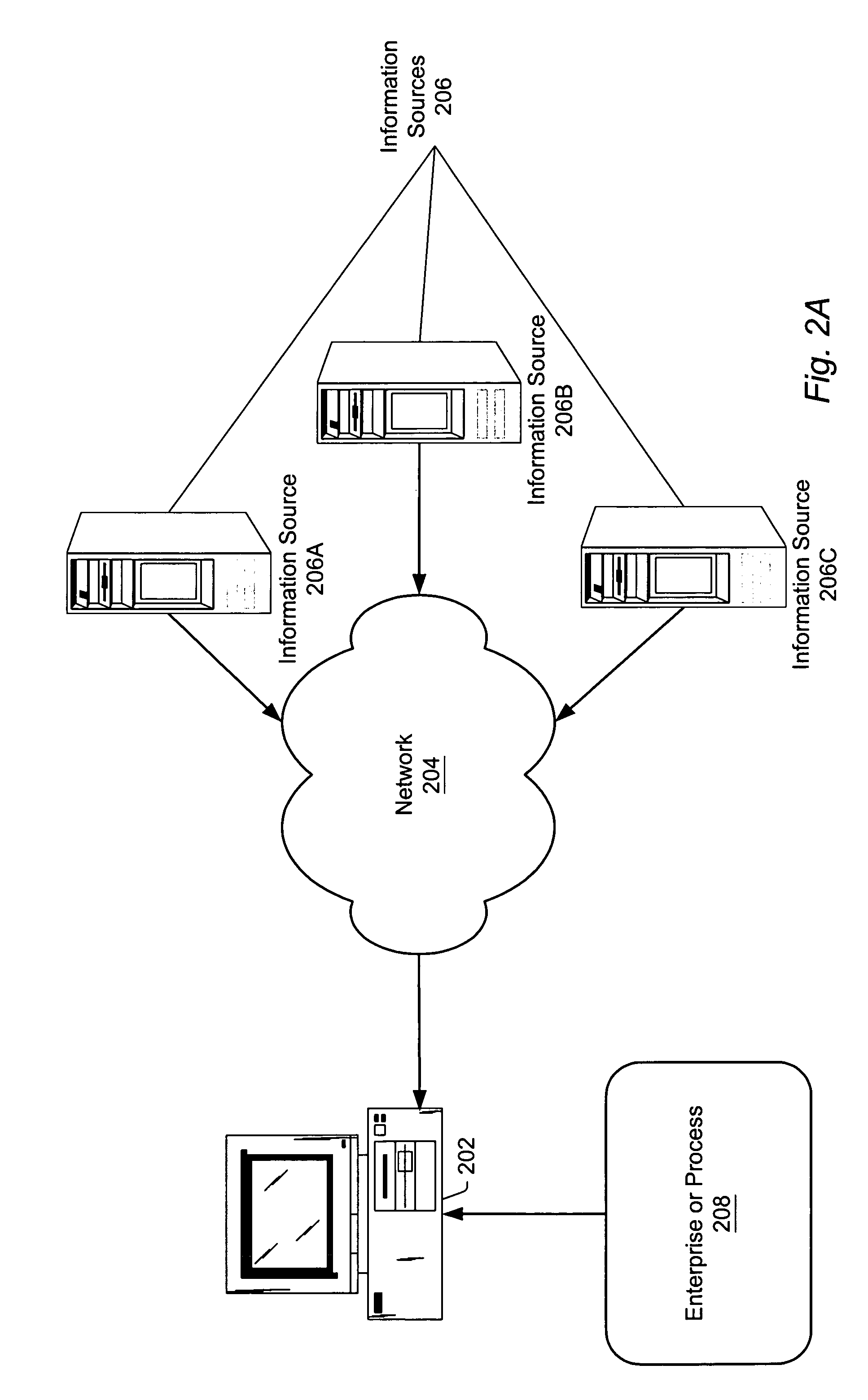Dynamic cost accounting
a cost accounting and dynamic technology, applied in the field of cost accounting, can solve the problems of increasing cost accounting techniques, errors in overhead cost calculations, and difficulty in attribution of overhead costs to specific processes and products
- Summary
- Abstract
- Description
- Claims
- Application Information
AI Technical Summary
Benefits of technology
Problems solved by technology
Method used
Image
Examples
Embodiment Construction
[0037]FIG. 2A—Exemplary System With Multiple Remote Information Sources
[0038]FIG. 2A illustrates a simplified and exemplary view of one embodiment of a system according to the present invention. As shown, the system may include one or more computer systems 202 coupled to a plurality of remote information sources 206A, 206B, and 206C, which may be referred to collectively or generically as information or data source(s) 206, over a network 204, e.g., a Local Area Network (LAN), or a Wide Area Network (WAN), such as the Internet. Although the information sources shown in FIG. 2A are shown as server computers, it is noted that in various embodiments, the information sources may comprise other types of sources, including, for example, sensors, live data-feeds, such as stock tickers, instruments, etc. The computer system 202 may represent any of various types of computer systems or networks of computer systems which execute software program(s) according to various embodiments of the inve...
PUM
 Login to View More
Login to View More Abstract
Description
Claims
Application Information
 Login to View More
Login to View More - R&D
- Intellectual Property
- Life Sciences
- Materials
- Tech Scout
- Unparalleled Data Quality
- Higher Quality Content
- 60% Fewer Hallucinations
Browse by: Latest US Patents, China's latest patents, Technical Efficacy Thesaurus, Application Domain, Technology Topic, Popular Technical Reports.
© 2025 PatSnap. All rights reserved.Legal|Privacy policy|Modern Slavery Act Transparency Statement|Sitemap|About US| Contact US: help@patsnap.com



